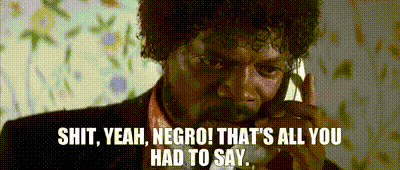It’s not only The Joker who specialises in poisoning with his own signature chemical toxin but a number of Batman’s other chemically-altered or drug-crazed members of his Rogues’ Gallery, most notably The Scarecrow (who uses his gas compound to inflict mortifying, soul-trembling Fear, Bane (who juices himself with the fast-acting military-grade Super Steroid, Venom before engaging a foe in single combat),and Dr. Hugo Strange (who pionneered his use of a hormonal serum that causes men to permanently mutate into a viscious but servile brutish form of Giant Statue, which he dubbed Monster Men.)
Batman is GOOD at coping with exotic, mind altering poisons and chemicals, both mentally, psychologically and physiologically — he gets them thrown all over him, A LOT, he always has done, and he has become an expert at recognizing the effects, coping with and/of completely dismissing or disregarding them and counteracting them, either through physical action, mental discipline, physical tolerance or through the isolation and synthesis of a specific antidote.
He can think his way out of almost any trap, get back on his feet, walk it off, and get himself to the Help he needs or the facilities and resources whe will needs in order to stay alive, wake up and save himself.
Think Fast, Caped Crusader —
The Sacred Masculine is Dynamic, Forward-Moving Energy.
....occasionally moving in fast, tight circles when it HAS to (as in a Grave or Locked Box).
A Person who becomes Fatigued when Unhappy is Useless.
“I need you to get me out.
Alfred is ALIVE.
And Alfred is on MY Side.
I Need Your Help.
If I die, we BOTH die.
If I die, we BOTH die.
If I LIVE, you live on in My Memory.
You Know Me now as well as ANYONE.
I’ll FIND The Men Who Killed You.
Need a Jolt to Get You Moving...?"
“...it is said that much Sake, Self-Pride and Luxury are to be avoided by a samurai.
There is no cause for anxiety when you are unhappy, but when you become a little elated, these three things become dangerous. Look at The Human Condition. It is unseemly for a person to become Prideful and Extravagant when things are going well.
Therefore, it is better to have some Unhappiness while one is still Young, for if a person does not experience some Bitterness, his disposition will not settle down.
A Person who becomes Fatigued when Unhappy is Useless.”
Ketamine hydrochloride, also known as Special K, Kit-Kat, or simply K, belongs to a class of drugs called dissociative anesthetics. These drugs, which also include nitrous oxide and phencyclidine (PCP), separate perception from sensation.
Ketamine was created to be an anesthetic. Doctors still use it for general anesthesia in certain circumstances. The Food and Drug Administration (FDA) [Trusted Source] also recently approved a nearly identical drug, esketamine, for treatment-resistant depression.
People also use it recreationally for the floaty effect it provides in small doses.
In higher doses, it can produce dissociative and hallucinogenic effects, which are collectively called a K-hole or K-holing.
Sometimes, these effects can occur in smaller doses, too, even if taken as prescribed.
What does it feel like?
People describe a K-hole as an out-of-body experience. It’s an intense sensation of being separate from your body.
Some say it feels as if they’re rising above their body. Others describe it as being teleported to other places, or having sensations of “melting” into their surroundings.
For some, the K-hole experience is enjoyable. Others find it frightening and compare it to a near-death experience.
Several things can affect how you experience a K-hole, including how much you take, whether you mix it with alcohol or other substances, and your surroundings.
Generally, the psychological effects of a K-hole can include:
• feelings of detachment or disassociation from yourself and your surroundings
• panic and anxiety
• hallucinations
• paranoia
• changes in sensory perception, like sights, sound, and time
• confusion
• disorientation
The physical effects can be pretty unnerving to some people, too.
When you’re in a K-hole, numbness can make it difficult, if not impossible, to speak or move.
Not everyone enjoys this feeling of helplessness.
Other physical effects can include:
• dizziness
• nausea
• uncoordinated movement
• changes in blood pressure and heart rate
Everyone is different, so it’s impossible to predict how the experience will go down for a person.
When do the effects set in?
How fast it kicks in depends on how you use it. It’s most often found in powder form and snorted. It can also be taken orally or injected into muscle tissue.
TIMELINE OF EFFECTS
Generally, the effects of ketamine kick in within:
• 30 seconds to 1 minute if injected
• 5 to 10 minutes if snorted
• 20 minutes if ingested
Remember, everyone reacts differently. You may feel the effects sooner or later than others.
How long can it last?
The effects of ketamine typically last 45 to 90 minutes depending on the dose. For some people, effects can last for several hours or even days, according to the National Institute on Drug Abuse (NIDA).
Why does it happen?
Ketamine blocks glutamate, a neurotransmitter in your brain.
In turn, this blocks signals between your conscious mind to other parts of your brain. That results in the dissociative feeling of being separate from yourself and your environment.
Are there any risks involved?
Using ketamine or entering a K-hole does come with risks, some of them serious.
Keep in mind that not everyone has a good experience with ketamine, even in low doses or when taken as prescribed by a doctor. And having a bad experience can involve some pretty uncomfortable physical and mental symptoms.
These can include:
• paranoia
• extreme panic
• hallucinations
• short-term memory loss
When used in higher doses or frequently, risks include:
• vomiting
• long-term memory problems
• addiction
• urinary problems, including cystitis and kidney failure
• liver failure
• slow heart rate
• slow breathing
• death by overdose
Being in a K-hole also carries risk. When you’re in a K-hole, you may be unable to move or speak. If you do try to move, the numbness may cause you to fall, and that can injure yourself or someone else.
Entering a K-hole can also cause a person to become violently agitated, putting themselves and others at risk for harm.
Also, while you’re in a K-hole, people around you may not be able to tell if you’re in distress and in need of help.
Is there any way to do it safely?
Not really. There’s no way to guarantee having a perfectly safe experience with ketamine if you’re using it outside of doctor supervision. And compared with some other drugs, ketamine’s effects can be extremely unpredictable.
Harm reduction tips
Again, there’s no truly safe way to recreationally use ketamine or enter a K-hole. But if you’re going to use it, these tips might help you avoid or minimize certain risks:
• Know what you’re taking. Ketamine is a controlled substance that can be difficult to get. As a result, there’s a chance that what you believe is ketamine is actually a counterfeit drug that contains other substances. Drug-testing kits can confirm what’s in the pill or powder.
• Don’t eat for an hour or two before taking it. Nausea is a fairly common side effect of ketamine, and vomiting is possible. This can be dangerous if you’re unable to move or ensure you’re sitting upright. Avoid eating for 1 1/2 to 2 hours beforehand to reduce symptoms.
• Start with a low dose. You can’t predict how a drug will affect you. Start with the lowest dose possible to minimize your risk for a potentially dangerous reaction. Also, resist the urge to dose again until you’ve given the drug plenty of time to kick in.
• Don’t use it regularly. Ketamine carries a high risk of dependence and addiction (more on this later).
• Choose a safe setting. High doses or being in a K-hole can cause confusion and make it difficult for you to move or communicate, putting you in a vulnerable position. For this reason, ketamine is often used as a date rape drug. If you do use it, be sure you’re in a safe and familiar place.
• Don’t do it alone. No one can predict how a drug will affect them, even if they’ve taken it before. Have a friend with you. Ideally, this person won’t be using ketamine with you but is familiar with its effects.
• Practice safe hygiene. Good hygiene is important for reducing the risk of infection or injury. If snorting ketamine, do it on a clean surface with something sterile (i.e., not a rolled-up dollar bill). Rinse your nose with water when you’re done. If injecting ketamine, use a new, sterile needle, and don’t ever share needles. Sharing needles puts you at risk for hepatitis B and C and HIV.
• Don’t mix it. Taking ketamine with alcohol, other recreational drugs, or prescription medications can cause dangerous interactions. If you’re going to use ketamine, avoid mixing it with other substances. If you take prescription medications, it’s best to avoid using ketamine entirely.
• Take care of yourself after. The major effects of ketamine may wear off quickly, but everyone’s different. Some people experience subtle effects for hours or days after taking it. Eating well, staying hydrated, and getting exercise can help you feel better.
Healthline does not endorse the use of any illegal substances, and we recognize abstaining from them is always the safest approach.
However, we believe in providing accessible and accurate information to reduce the harm that can occur when using. If you or someone you know might be struggling with substance use, we recommend learning more and consulting a professional to get additional support.
How do I recognize an overdose?
Being in a K-hole is an intense experience. You might mistake some of those intense sensations for an overdose. Knowing the signs and symptoms of overdose is important so you know when you or someone else needs help.
KETAMINE OVERDOSE SIGNS AND SYMPTOMS
Seek immediate help if you or someone else is experiencing:
• vomiting
• irregular heartbeat
• high blood pressure
• slow or diminished breathing
• chest pain
• hallucinations
• loss of consciousness
If you’re unsure whether the symptoms are those of a K-hole or an overdose, err on the side of caution.
Call 911 or your local emergency services. Make sure you tell them that ketamine was taken. Keeping this information from the emergency responders could prevent someone from getting the care they need, resulting in long-term damage or even death.
I’m concerned about my use — how can I get help?
Ketamine has a high potential for dependence and addiction, especially when used in high doses or frequently.
Here are some signs that ketamine use might be developing from a dependence into an addiction:
• You need a higher dose to get the effect you were getting before.
• You can’t stop taking it even though it’s negatively affecting your life, like with work, relationships, or finances.
• You use it as a way to cope with feelings of unhappiness or stress.
• You have cravings for the drug and its effects.
• You experience withdrawal symptoms when you go without it, like feeling rundown or shaky.
If you’re worried about your ketamine use, you have a few options for getting support:
• Talk to your primary healthcare provider. Be open and honest with them about your ketamine use. Patient confidentiality laws prevent them from reporting this information to law



